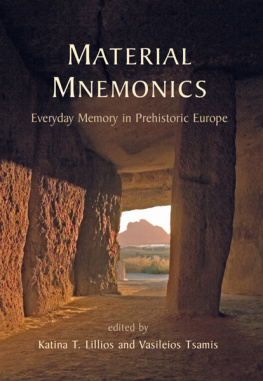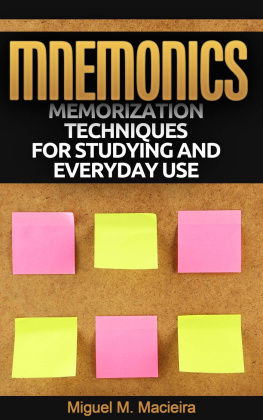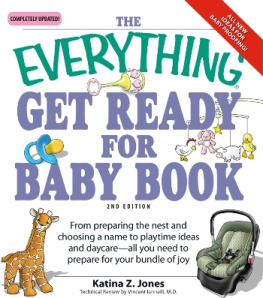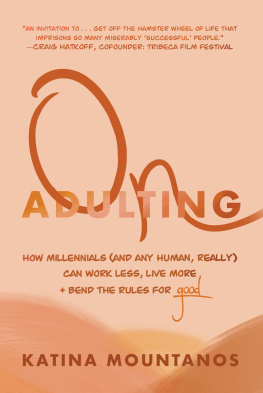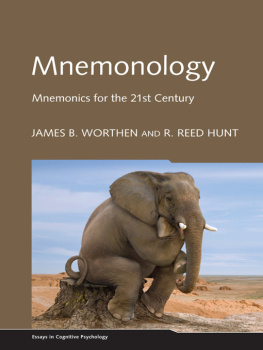Lillios Katina T. - Material Mnemonics
Here you can read online Lillios Katina T. - Material Mnemonics full text of the book (entire story) in english for free. Download pdf and epub, get meaning, cover and reviews about this ebook. year: 2010, publisher: Casemate Publishers & Book Distributors, LLC, genre: Romance novel. Description of the work, (preface) as well as reviews are available. Best literature library LitArk.com created for fans of good reading and offers a wide selection of genres:
Romance novel
Science fiction
Adventure
Detective
Science
History
Home and family
Prose
Art
Politics
Computer
Non-fiction
Religion
Business
Children
Humor
Choose a favorite category and find really read worthwhile books. Enjoy immersion in the world of imagination, feel the emotions of the characters or learn something new for yourself, make an fascinating discovery.
- Book:Material Mnemonics
- Author:
- Publisher:Casemate Publishers & Book Distributors, LLC
- Genre:
- Year:2010
- Rating:4 / 5
- Favourites:Add to favourites
- Your mark:
- 80
- 1
- 2
- 3
- 4
- 5
Material Mnemonics: summary, description and annotation
We offer to read an annotation, description, summary or preface (depends on what the author of the book "Material Mnemonics" wrote himself). If you haven't found the necessary information about the book — write in the comments, we will try to find it.
Material Mnemonics — read online for free the complete book (whole text) full work
Below is the text of the book, divided by pages. System saving the place of the last page read, allows you to conveniently read the book "Material Mnemonics" online for free, without having to search again every time where you left off. Put a bookmark, and you can go to the page where you finished reading at any time.
Font size:
Interval:
Bookmark:

Published by
Oxbow Books, Oxford, UK
Oxbow Books and the individual authors, 2010
ISBN 978-1-84217-966-6
EPUB ISBN: XXXXXXXXXXXXX
This book is available direct from:
Oxbow Books, Oxford, UK
(Phone: 01865-241249; Fax: 01865-794449)
and
The David Brown Book Company
PO Box 511, Oakville, CT 06779, USA
(Phone: 860-945-9329; Fax: 860-945-9468)
or from our website
www.oxbowbooks.com
Front cover: View of La Pea de los Enamorados from the rear of the Menga dolmen (Antequera,
Malaga, Spain) on the summer solstice of 2007 at 0712 hours. Photograph by Javier Prez Gonzlez.
Courtesy of the Ministry of Culture, Andalusian Government
Back cover: Reconstruction of storage room 9 from Assiros building phase 9 (circa 1360BC).
Image created by Richard Potter
A CIP record of this book is available from the British Library
Library of Congress Cataloging-in-Publication Data
Material mnemonics : everyday memory in prehistoric Europe / edited by Katina T. Lillios and Vasileios
Tsamis.
p. cm.
Includes bibliographical references.
ISBN 978-1-84217-966-6 (pbk.)
1. Prehistoric peoples--Europe. 2. Social archaeology--Europe. 3. Anthropology, Prehistoric--Europe.
4. Memory--Social aspects--Europe. 5. Mnemonics--Social aspects--Europe. 6. Antiquities, Prehistoric-
Europe. I. Lillios, Katina T., 1960- II. Tsamis, Vasileios.
GN803.M38 2010
153.140936--dc22
2010029645
Printed and bound in Great Britain by
Hobbs the Printers Ltd, Totton, Hampshire
List of contributors
BETTINA ARNOLD
Department of Anthropology
University of Wisconsin-Milwaukee
290 Sabin Hall
P.O. Box 413
3413 N. Downer Ave
Milwaukee, Wisconsin 53201 USA
LEONARDO GARCA SANJUN
Departamento de Prehistoria y Arqueologia
Universidad de Sevilla
Sevilla, Spain
YANNIS HAMILAKIS
Department of Archaeology
University of Southampton
Avenue Campus
Highfield
Southampton, SO17 1BF, UK
ANDREW JONES
Department of Archaeology
University of Southampton
Avenue Campus
Highfield
Southampton, SO17 1BF, UK
LARS LARSSON
Department of Archaeology and Ancient
History
Lund University
Box 117
SE-221 00 Lund, Sweden
JANET E. LEVY
Department of Anthropology
University of North Carolina-Charlotte
Charlotte, North Carolina 28223 USA
KATINA T. LILLIOS
Department of Anthropology
114 Macbride Hall
University of Iowa Iowa
City, Iowa 52242 USA
ROBIN SKEATES
Department of Archaeology
Durham University
South Road
Durham, DH1 3LE, UK
VASILEIOS TSAMIS
Wessex Archaeology Ltd
Portway House
Old Sarum Park
Salisbury, SP4 6EB, UK
DAVID WHEATLEY
Department of Archaeology
University of Southampton
Avenue Campus
Highfield
Southampton, SO17 1BF, UK
Introduction
Katina T. Lillios and Vasileios Tsamis
Beginning in the 1990s, archaeologists and other scholars of material culture increasingly turned their attention to memory and devoted themselves to identifying and analyzing memory practices, memory sites, and material mnemonics (Alcock 2002; Bradley 2002; Buchli and Lucas 2001; Forty and Kchler 1999; Hallam and Hockey 2001; Jones 2007; Mills and Walker 2008; Radstone 2000; Saunders 2003; Van Dyke and Alcock 2003; Williams 2003). This mnemophilia is likely related to and dependent on emerging intellectual currents in the study of agency, biography, time, nationalism, and identity politics. Whether memory studies remain a theoretical horizon broadly experienced but short-lived or mature to become part of a more enduring phase in the evolution of archaeological theory and practice is, however, unknown.
Writing about memory is to open a Pandoras Box of further possibilities. To avoid a lengthy and generalised discussion of the subject, we wish to briefly consider those writers and their works that have influenced todays archaeologies of memory, specifically in the ways they articulate everyday memory, the collective, place, and the senses. These writers include Halbwachs (1992[1925]), Bachelard (1964), Casey (1987), Nora (1989), and Connerton (1989).
The works of Maurice Halbwachs focus on two main lines of research. The first is social classes, in particular, the working class (e.g. in terms of consumption, housing, and life styles), and the second is the role of memory in a program of collective psychology. Halbwachs criticizes scholars who consider memory as solely developed from individual psychology. His analysis stresses the importance of society in the creation of memory. In his work On Collective Memory (1992[1925]) he demonstrates that the past is not kept in individual memory, and it cannot be relived as such. In contrast, collective representations constitute memory based on the necessities of the present. He applied this reasoning to the history of Christian civilization in La topographie lgendaire des vangiles (Halbwachs 1941), showing how religious beliefs are based on a history whose essential events are materialized in very particular places (e.g. the Sea of Galilee, Mount Zion, etc.). Finally, he explains how the re-settlement of these religious sites functions to address issues of the present, transforms memory and, at the same time, guarantees its continued existence.
A fundamental work in the meanings of domestic space and memory, and of relevance to archaeologists, is Gaston Bachelards The Poetics of Space (1964). Bachelard analyses domestic space as triggering memories with its smells, spatial orientation, and interaction with people. He believes the house is constantly interacting with its inhabitants, a space which contains compressed time, since it is seen as accumulating different experiences from different people. According to Bachelard, we should go beyond the problem of description and instead focus on how we inhabit space (1964: 4). The way we inhabit space is based on memories and the fact that the more securely these memories are tethered to space, the sounder they are. Focusing on the house people are born in, Bachelard puts forward the idea that such a house is not only an embodied experience or memory, but also an embodiment of dreams. Each part of the house can remind us of childhood dreams (both metaphorically and literally) and plans for the future. Therefore, space is not only remembered, experienced, and lived, but it is also dreamed and imagined.
A thorough description of the varieties of emplaced human memory is stated in Edward Caseys Remembering: A Phenomenological Study (1987). In his book Casey uses habitus in order to provide a framework for linking emplacement with embodiment and a phenomenological framework to argue for the primacy of place over space. We come to the world we come into it and keep returning to it as already placed there (Casey 1996: 18). Both sensory experiences and spaces are emplaced from the very first moment and at every subsequent moment as well. Embodiment and emplacement become the fundamental essentials for Caseys geographical self. The self does not exist independently of body and place (1987: 147).
Furthermore, Casey demonstrates the major role of the human body in remembering and forgetting the past. Bodily movement takes people into places and helps to remember them vividly. Hence, memory is not just something of the past, but something practiced in the present. Casey emphasizes that place is crucial in understanding memory. He explains that place has been overlooked because memory was linked with time and that place was diminished to description. Having been in places is a fundamental resource for remembering our being in the world. Thus, places serve as reference points and triggering mechanisms for the formation of memories in the present (1987: 215). The slow re-emergence of place as a viable and productive notion only occurred with the recognition of the importance of the body in spatial orientation and in ordinary perception. This recognition is adopted by Casey in his later work
Next pageFont size:
Interval:
Bookmark:
Similar books «Material Mnemonics»
Look at similar books to Material Mnemonics. We have selected literature similar in name and meaning in the hope of providing readers with more options to find new, interesting, not yet read works.
Discussion, reviews of the book Material Mnemonics and just readers' own opinions. Leave your comments, write what you think about the work, its meaning or the main characters. Specify what exactly you liked and what you didn't like, and why you think so.

